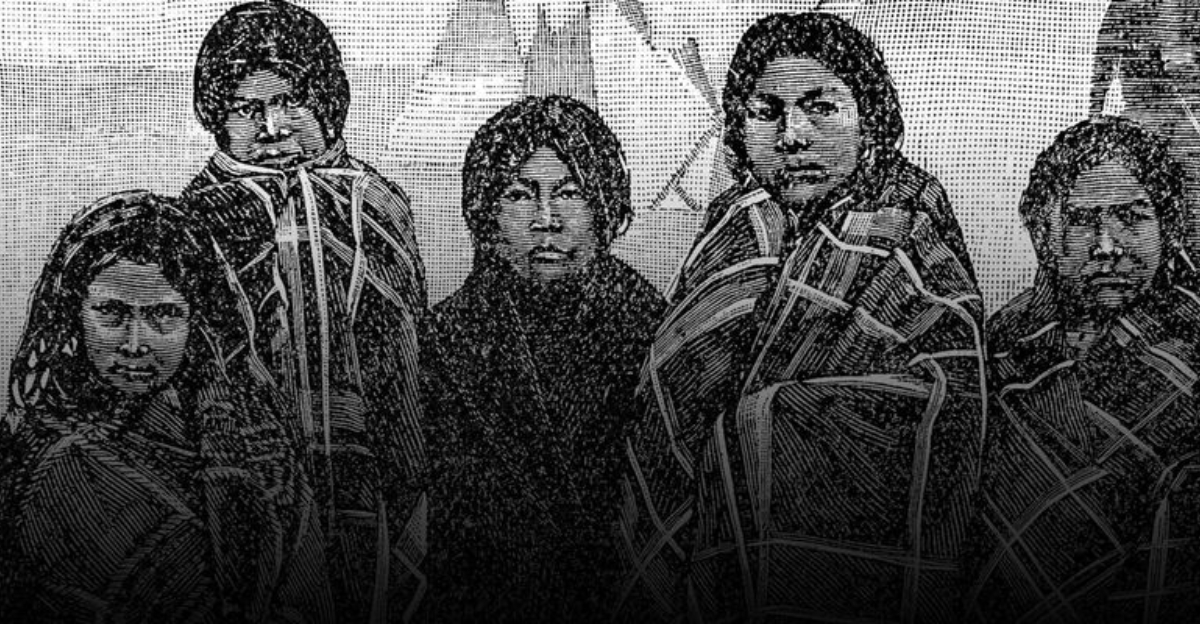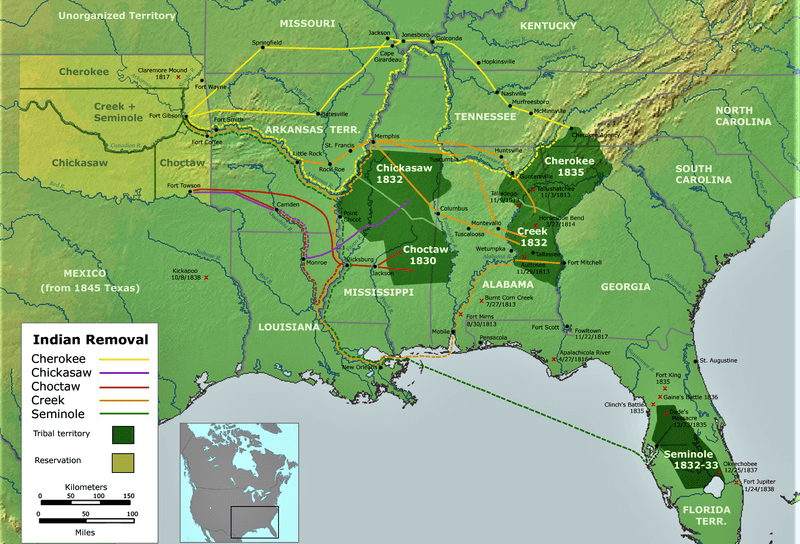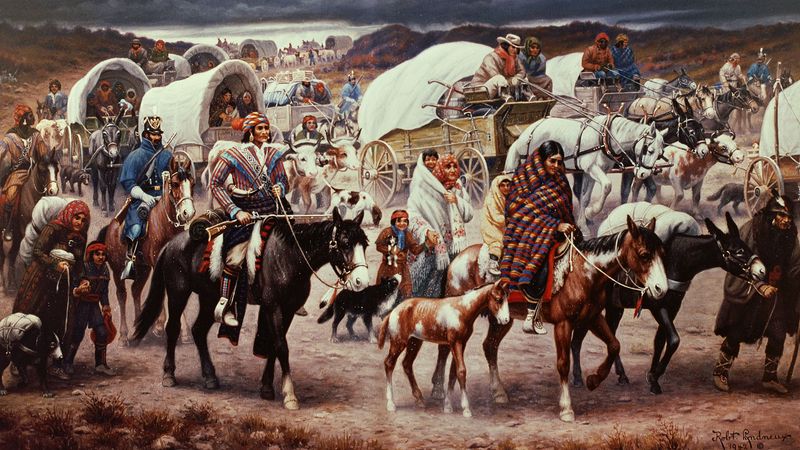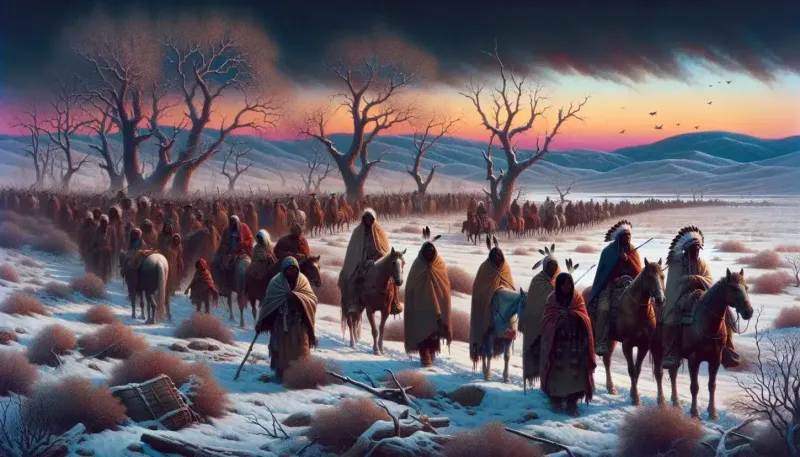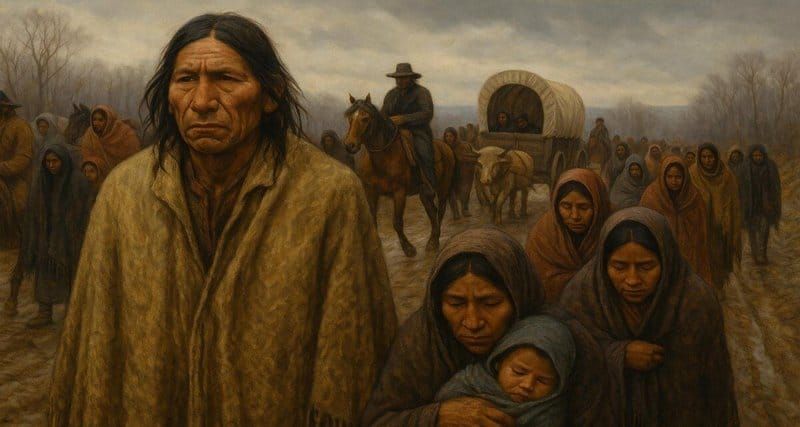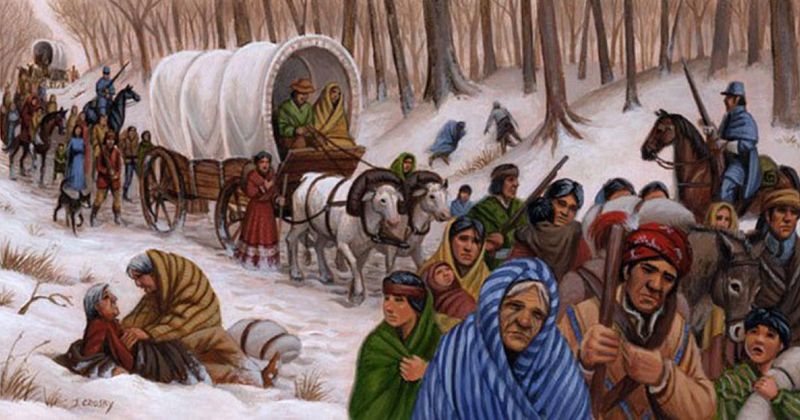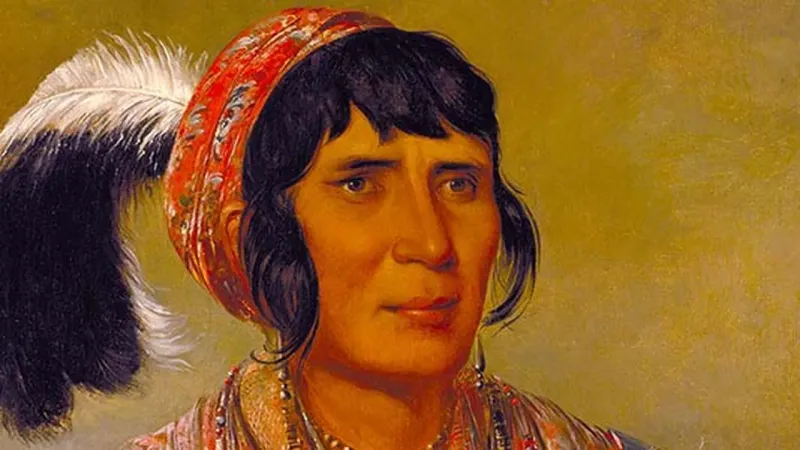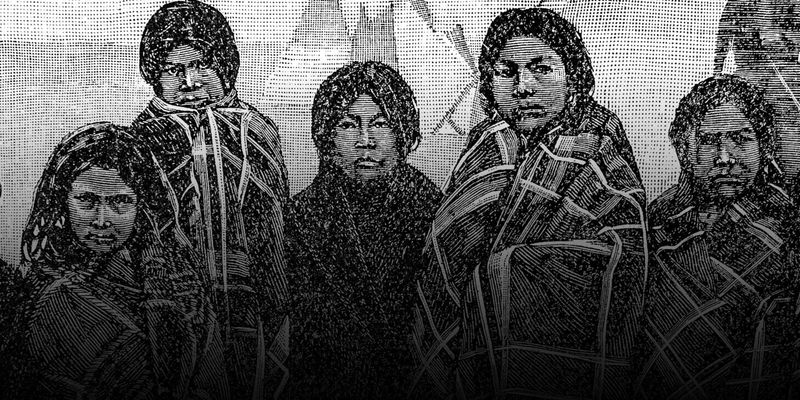The Trail of Tears stands as one of the darkest chapters in American history. During the 1830s, the United States government forcibly removed Native American tribes from their ancestral homelands in the Southeast, marching them hundreds of miles to territories west of the Mississippi River.
Thousands died along the way from disease, starvation, and exposure to harsh weather conditions. This devastating journey reveals how broken treaties, political greed, and cultural prejudice combined to create a humanitarian tragedy that forever changed the landscape of Native American life.
1. Legalized Betrayal: The Indian Removal Act of 1830
President Andrew Jackson championed and signed this devastating legislation that gave the government power to forcibly relocate Native Americans from their ancestral lands. The act specifically targeted tribes in the Southeast, offering them little choice in the matter.
Many Americans today don’t realize this forced removal was actually legal under U.S. law. Congress narrowly passed the bill despite fierce opposition from figures like Davy Crockett, who called it a “wicked, unjust measure.”
The act directly contradicted earlier Supreme Court rulings that had recognized tribal sovereignty, showing how easily the government could manipulate laws when valuable land was at stake.
2. Five Major Tribes Uprooted From Their Homes
Known collectively as the “Five Civilized Tribes” by white settlers, the Cherokee, Chickasaw, Choctaw, Creek, and Seminole nations bore the brunt of removal policies. Each tribe had established farms, towns, schools, and governments that mirrored European-American structures.
Smaller tribes like the Ponca, Winnebago, Sac, Fox, and many others also faced forced relocation. Some tribes had even fought alongside American forces in earlier conflicts, making the betrayal especially bitter.
Many of these tribes had adopted aspects of European culture and technology in hopes of peaceful coexistence, only to discover that adaptation offered no protection from land-hungry settlers.
3. Massive Population Displacement Across the Nation
Approximately 100,000 Native Americans were forcibly uprooted from their ancestral territories during this dark period of American history. Entire communities vanished from lands they had inhabited for countless generations.
Family units were torn apart during the chaotic roundups. U.S. soldiers often arrived without warning, giving families just minutes to gather belongings before being marched away at gunpoint.
The scale of this population transfer would be equivalent to relocating the entire population of a major American city today. Many tribes lost access to sacred sites, burial grounds, and cultural landmarks that had defined their identity for centuries.
4. The Cherokee’s Grueling 1,000-Mile March
Forced from their homes in Georgia, North Carolina, and Tennessee, the Cherokee endured a brutal journey to present-day Oklahoma. Military escorts rushed the travelers regardless of weather conditions, often through mountainous terrain and across dangerous river crossings.
The journey typically took 5-6 months on foot. Elderly people, pregnant women, and young children all had to keep the same pace or risk being left behind.
Winter conditions proved especially deadly along the northern route. In December 1838, hundreds froze to death when temperatures plummeted below zero, earning this route the Cherokee name “nunna-da-ul-tsun-yi” – literally “the trail where they cried.”
5. Deadly Toll: Thousands Perished Along the Way
Conservative estimates suggest at least 4,000 Cherokee died during removal – representing nearly a quarter of their entire population. Dysentery, whooping cough, cholera, and exposure claimed countless lives along the trail.
Bodies often had to be left unburied as military escorts refused to stop for proper funeral ceremonies. Children were particularly vulnerable, with some accounts describing how parents carried the bodies of their dead children for days, unable to part with them.
Medical care was virtually nonexistent. The government provided minimal supplies, and what little food was available was often spoiled or insufficient for the journey’s demands.
6. Broken Promises: Treaties Made to Be Violated
The U.S. government repeatedly negotiated treaties with Native tribes only to break them when convenient. The Treaty of New Echota, signed by unauthorized Cherokee representatives, was used to justify their removal despite being rejected by the majority of the tribe.
Land promised “in perpetuity” rarely remained in Native hands for long. Once tribes reached Indian Territory (now Oklahoma), new settlers soon pressured the government to take even these lands.
Many tribes were promised financial compensation, supplies, and protection in their new territories. These promises largely went unfulfilled, leaving relocated populations struggling to survive in unfamiliar environments with inadequate resources.
7. Years of Suffering: The Prolonged Tragedy
Rather than a single event, the Trail of Tears stretched across an entire decade. The Choctaw were the first to be removed in 1831, followed by the Seminole in 1832, the Creek in 1834, the Chickasaw in 1837, and finally the Cherokee in 1838-1839.
Each tribe faced unique hardships during their forced migration. The Choctaw removal occurred during a particularly harsh winter, leading a Choctaw chief to describe it as a “trail of tears and death” – the first use of the phrase that would later name the entire tragedy.
For some tribes, the journey took years as they resisted, hid in remote areas, or were delayed by bureaucratic problems that left them stranded in temporary camps with inadequate supplies.
8. Fierce Resistance: The Seminole Wars
Unlike other tribes, the Seminole actively fought against removal in a series of bloody conflicts known as the Seminole Wars. Led by warriors like Osceola, they waged guerrilla warfare from Florida’s swamps and forests for seven years.
The U.S. spent over $20 million fighting the Seminole – far more than the cost of simply allowing them to remain on their land. Osceola himself was captured under a false flag of truce, a dishonorable tactic that violated accepted rules of warfare.
Some Seminole escaped deep into the Everglades, becoming the ancestors of today’s Seminole Tribe of Florida. Their resistance represents one of the longest and most expensive Indian wars in American history.
9. Justice Denied: When the Supreme Court Was Powerless
In a landmark 1832 case, Worcester v. Georgia, Chief Justice John Marshall ruled that Georgia could not impose its laws on Cherokee territory. This decision should have protected Cherokee sovereignty and prevented their removal.
President Andrew Jackson famously defied the Supreme Court ruling. When told of the decision, he allegedly declared, “John Marshall has made his decision; now let him enforce it.” This blatant disregard for the separation of powers set a dangerous precedent.
Without executive branch support, the Court’s ruling became meaningless. This case remains a stark example of how even the highest court in the land could not protect Native rights when faced with a president determined to ignore its authority.
10. Profiteering: How Companies Exploited Native Suffering
The government contracted private companies to handle aspects of Native removal, creating opportunities for corruption and profiteering. These contractors were paid per person transported, incentivizing them to pack wagons and boats beyond safe capacity.
Food suppliers often provided spoiled rations at inflated prices. One contractor famously substituted corn meal for the required corn, leaving tribes without the ability to grow crops in their new territory.
Military officers and government agents frequently embezzled funds meant for Native assistance. When tribes finally reached Indian Territory, many discovered that promised supplies, housing materials, and livestock had been sold off by corrupt officials before ever reaching them.
11. Arriving to Nothing: The Harsh Reality of Indian Territory
Survivors who reached Indian Territory (now Oklahoma) found barren land nothing like their lush southeastern homelands. Many arrived in winter to find no housing, inadequate food supplies, and hostile conditions.
Different tribes were often placed on adjacent lands, creating tensions between peoples who had no historical connection or shared language. The U.S. government frequently resettled eastern tribes on lands already claimed by plains tribes, sparking new conflicts.
The first winter in Indian Territory proved nearly as deadly as the journey itself. Without proper shelter, tools, or time to establish crops, starvation and exposure claimed even more lives among people already weakened by the grueling march.
12. Treated Like Prisoners: Chains and Military Force
Many Native Americans were transported in chains, particularly those who resisted removal. U.S. Army troops surrounded villages at gunpoint, giving families mere hours to gather belongings before forcing them into stockades.
The Cherokee removal became especially brutal after General Winfield Scott took command. His troops conducted surprise raids on Cherokee homes, sometimes dragging people away while still in their nightclothes.
Detention camps held thousands in cramped, unsanitary conditions before the march began. At one site near Charleston, Tennessee, over 13,000 Cherokee were held in open-air pens during the summer of 1838, with hundreds dying from disease before even beginning the westward journey.
13. Stories Preserved: How Oral Histories Kept Memory Alive
When written records failed to capture the full human tragedy, tribal elders preserved the truth through oral tradition. Stories passed down through generations kept alive the names of those who died and the sacred sites that were lost.
Songs like the Cherokee “Goingback Chiltoskey” memorialize the journey in lyrics that describe specific hardships faced along the route. These cultural memories helped tribes maintain their identity despite the government’s attempts to erase their heritage.
Modern Native storytellers continue this tradition today. Contemporary artists, writers, and musicians from affected tribes create works that connect younger generations to their ancestors’ experiences, ensuring the Trail of Tears remains a living history rather than a forgotten footnote.
14. Generational Trauma: The Ongoing Impact
The effects of the Trail of Tears continue to reverberate through Native communities today. Research shows that historical trauma can be passed down through generations, affecting mental and physical health outcomes in descendants of those who experienced the original trauma.
Cultural disconnection remains a significant challenge. Many traditional practices, language elements, and spiritual knowledge were lost when elders died during removal or in the difficult years that followed.
Economic impacts persist as well. The loss of resource-rich ancestral lands created poverty that many tribal communities still struggle to overcome. Forced relocation disrupted traditional economies and self-sufficient lifestyles that had sustained these communities for centuries.
15. Limited Recognition: America’s Forgotten Atrocity
Despite being one of America’s greatest humanitarian tragedies, the Trail of Tears receives minimal attention in most school curriculums. Many Americans graduate without understanding the scale of this forced migration or its lasting impact on Native communities.
The National Park Service maintains the Trail of Tears National Historic Trail, marking the routes taken by removed tribes. However, these sites receive far fewer visitors than other historical landmarks of similar significance.
Only in recent decades have some government officials offered formal apologies. In 2009, Congress passed a resolution apologizing to Native Americans for “years of official depredations, ill-conceived policies, and the breaking of covenants” – though many tribal leaders noted this came 170 years too late.
